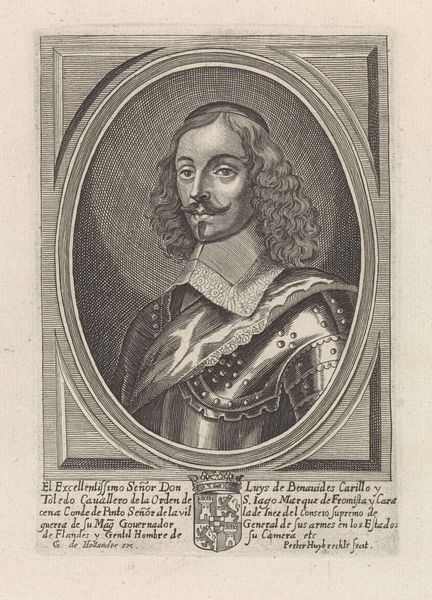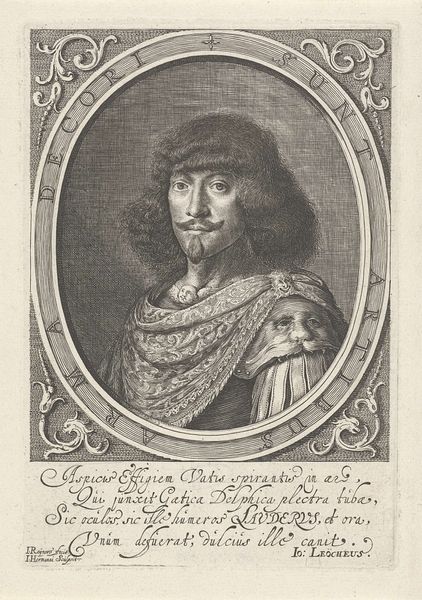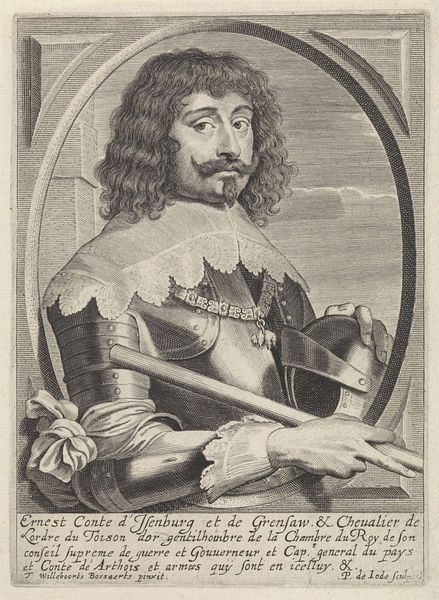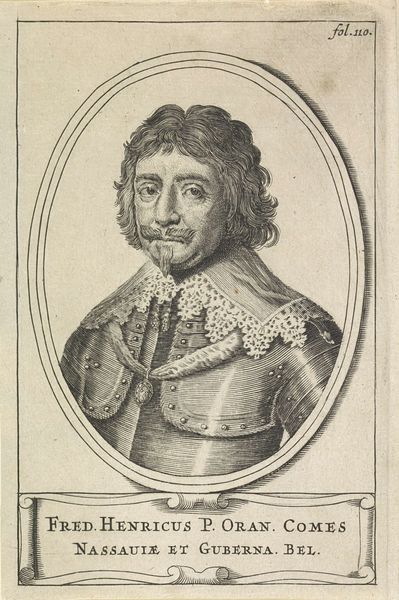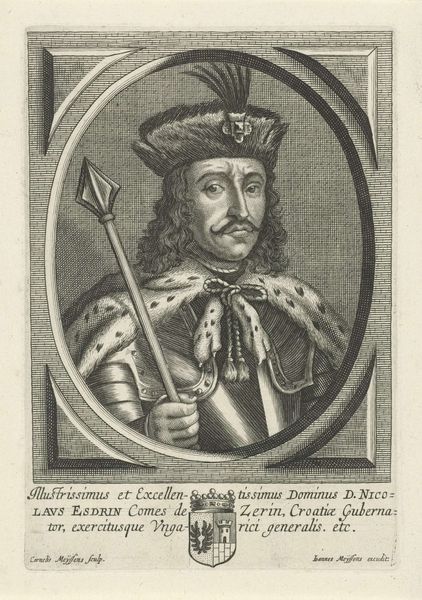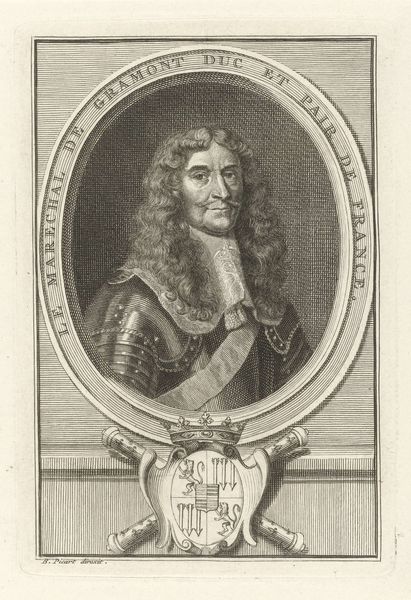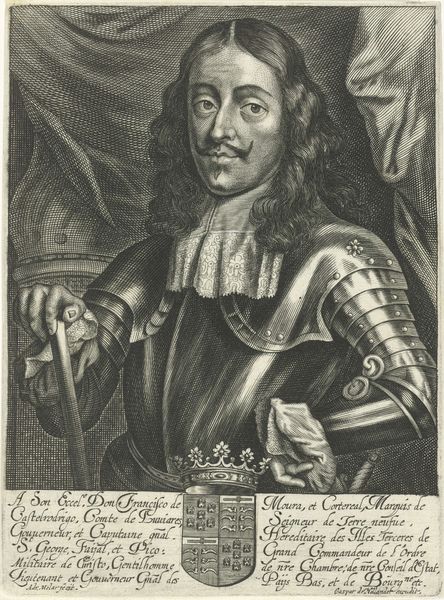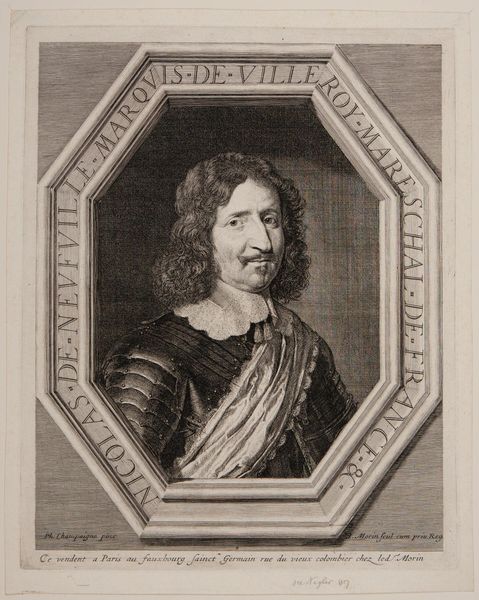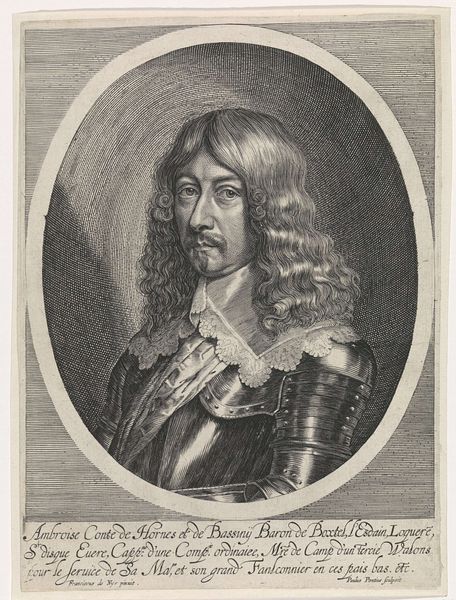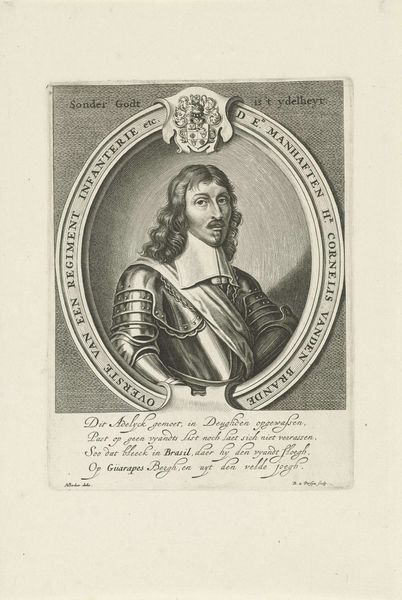
engraving
#
portrait
#
baroque
#
history-painting
#
engraving
Dimensions: height 241 mm, width 155 mm
Copyright: Rijks Museum: Open Domain
This print, portraying Don Lvigi de Benavides Carillo, was made in 1653 by Giovanni Paolo Bianchi. It’s an engraving, which means the artist would have used a sharp tool called a burin to carve lines into a metal plate, likely copper. Ink would then be applied to the plate, and the surface wiped clean, leaving ink only in the incised lines. Finally, the plate is pressed onto paper, transferring the image. The quality of the engraving tells us a lot about the status of the sitter. Notice the intricate detail in his lace collar and the ornate fabric draped behind him. These are all signs of wealth and power, carefully rendered by the artist's skilled hand. The proliferation of prints at this time was directly linked to increased trade and a growing middle class who wanted access to art. Engravings like this one allowed for the mass production of images, making them more accessible than unique paintings, but were still an exclusive luxury. So, next time you see a print, consider not just the image itself, but the labor and social context that made it possible.
Comments
No comments
Be the first to comment and join the conversation on the ultimate creative platform.
